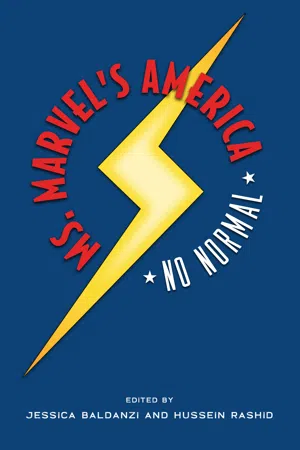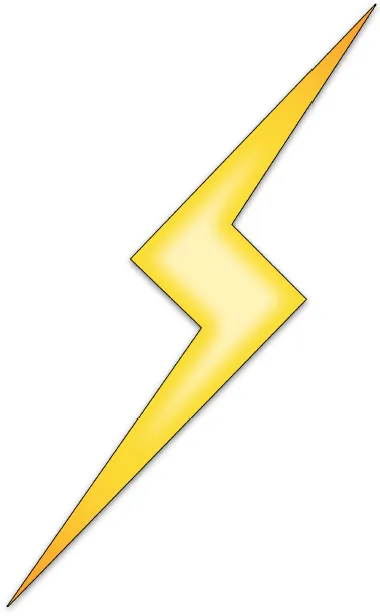![]()
PART ONE
Precursors
![]()
MENTORING MS. MARVEL
Marvel’s Kamala Khan and the Reconstitution of Carol Danvers
J. RICHARD STEVENS
The phrase “Higher, Further, Faster, More,” which adorns t-shirts and merchandise and is the title of the first comic book arc of the 2014 volume of Captain Marvel, captures the spirit of Marvel’s most successful recent attempt to create an inspiring female superhero figure by again reviving and reconfiguring Carol Danvers, the original Ms. Marvel. The Danvers character has endured several relaunches through the years, but the current series of changes involves nearly every aspect of the character’s appearance, history, and even personality. The new Captain Marvel is considered the vanguard of a concerted effort by Marvel to increase the number of female heroes in Marvel’s publications to more explicitly address the interests of a rising female readership (Alonso, Armitage).
In 2014, Marvel also launched the third series to be titled Ms. Marvel, featuring Kamala Khan as an inclusive and intersectional symbol of female heroism. Taking her name from the original 1977 character, Khan’s portrayal represented a convergence of contrasts, a Muslim American teen from New Jersey who initially takes on the form of Danvers, the blonde superheroine from New York.
The 2014 Ms. Marvel narrative opens with Khan struggling against conflicting loyalties from her dual identity: the teenage Pakistani American girl who does not wear the hijab and cannot eat the sandwich she craves because she does not eat pork; the daughter who seeks parental permission, and violates her parents’ rules by sneaking out to a waterfront party to impress her friends.
This act of defiance leads to a transformation when Terrigen Mist envelops her and activates her latent Inhuman powers. As her body transforms, Khan is presented with a psychedelic vision of Carol Danvers and the Avengers. Through dialogue with them, she explores her own standing in multiple communities and considers the gulf between the identity conflicts of her daily existence and her desires for simplicity. She says to Danvers, “I want to be beautiful and awesome and butt-kicking and less complicated. I want to be you. Except I would wear the classic, politically incorrect costume and kick butt in giant wedge heels” (Wilson and Alphona “Metamorphosis” 17).
This juxtaposition frames the identity struggle of Kamala Khan: a darker-skinned Pakistani American teen who feels drawn to Western forms of attractiveness, who struggles against both the strictures imposed by her family’s culture and the excesses of American-mediated norms. Forced to balance an intricate dance of daily code switching, Khan yearns for simplicity in her identity, a tendency representing the plight of intersectional identities and of millennials in general.
When the vision dissipates, Khan (whose powers include shape shifting) emerges from her cocoon in the image of an earlier “politically incorrect” Carol Danvers Ms. Marvel. She initially uses Danvers’s form when employing her shape-altering powers, but she soon fashions a costume from a burkini to make use of her own body during missions (Wilson and Alphona “Past Curfew”).
Khan’s early adventures include rescuing millennial peers from exploitation, juggling the pressures of school, learning about her new identity as an Inhuman, trying to find peace between her family’s home culture and expectations of what it means to be “American,” connecting to her new superhero community, enduring the pressures of teenage relationship worries, and navigating the politics of high school.
Generational themes of identity resonate strongly within the comic, and author G. Willow Wilson said she intended Ms. Marvel as an anthem to millennials (Wilson, personal interview). This premise becomes most prominent at the conclusion of the first narrative arc, as Ms. Marvel uncovers a plot by a villain called the Inventor, who convinces teens to surrender themselves as living batteries in an effort to reduce their carbon footprint and provide a new energy source to the world. Freeing some teens, Khan begins to challenge their low spirits with rousing dialogue:
Okay. Real talk time. I get it. I do. The media hates us because we read on our smartphones. The economists hate us because we trade things instead of buying them. (I read that article in The Pedantic Monthly for school the other day.) Just because they’re old doesn’t make them right. We’re not the ones who messed up the economy or the planet. Maybe they do think of us as parasites, but they’re not the ones who are gonna have to live with this mess—. (Wilson and Alphona “Generation Why” 2)
Khan gets several opportunities in the text to offer social criticism of intergenerational relations, though issue 10 represents the most concentrated example of such rhetoric. Inspiring her peers to recognize their own individual potential for contribution, they band together in mutual support to defeat the Inventor. Throughout her adventures, Khan’s voice serves as a rallying cry for millennials to support one another and to find value from their own generational values. However, this voice still exists within the context of her connections to members of other generations—most prominently her namesake, the original Ms. Marvel, Carol Danvers.
Khan encounters Danvers in issue 16, and the two form an intergenerational bond over their shared superhero identities. Danvers serves as a mentor to the teen superhero. The relationship comes to define both characters and finally provides Danvers with the opportunity to explore her own reconfigured feminism.
Addressing Marvel’s Controversies
In 2014, Marvel Studios announced an upcoming film project for the Carol Danvers Captain Marvel. This announcement followed a series of articles and social media postings critical of the fourteen Marvel Studios film portrayals of female characters, including incidents of actors slut shaming a female character (Yamato), continued observations about the lack of any female-led solo film (Brown The Modern Superhero, 51), a relative lack of merchandising for female characters (Baker-Whitelaw, Stewart), and general concerns about the trend toward oversexualized presentations of female characters (Gentry).
Marvel Studios struggled with female representation in its first two phases of movie offerings. Part of that struggle likely stems from Disney’s gendered conception of Marvel, most prominently on display when Disney purchased Marvel in 2009 to fill a “boy need” (Carlson). However, an additional gender problem exists within the source texts themselves. Though Marvel takes pride in its classic character pantheon of “people with problems,” which introduced personal problems to make heroes more relatable to readers, the problems faced by Marvel’s female heroes tend toward the kinds of gross mischaracterizations that reinforce negative stereotypes and make film treatments risky. Beyond the commonly observed underrepresentation of female characters in the comics industry at large, the tendency toward revealing costumes, the prominent use of the male gaze, and the problems of gender stereotypes in characterizations indicative across the comics publication spectrum, Marvel heroines suffer from stigmatized personal and social problems such as domestic violence (the Wasp), mental illness (Aurora, Scarlet Witch), experiencing a miscarriage (Invisible Woman), and even rape (Mockingbird). Unfortunately, Carol Danvers suffered a combination of the worst of these treatments.
This chapter reviews the disturbing history of Danvers by tracking the unfortunate editorial decisions Marvel writers made for Danvers over the years. Documenting the turns to redirect the Danvers narrative, this essay analyzes both Ms. Marvel and Captain Marvel as feminist icons Marvel so desperately needs to engage the growing female audience of its film properties, comic books, and (most importantly) merchandise. The two characters’ interactions serve to promote both character frames for millennial consumers. Kamala Khan’s lack of compromising baggage serves as a touchstone for Danvers, reframing her as an icon worthy of respect through the millennial gaze. The two characters’ interactions serve to promote both character frames for millennial consumers.
The Original Ms. Marvel
Far from the feminist characterization that Danvers currently embodies, Captain Marvel began her career as a controversial figure only superficially representing feminist ideals. Created by Roy Thomas and Gene Colan, Carol Danvers originally appeared in Marvel Super-Heroes, volume 1, issue 13 (March 1968) as a supporting character to the original (male) Captain Marvel, the alien Mar-Vell. Introduced as head of security, Danvers is initially described as “Man or woman, … the finest head of security a missile base could want!” (13). Danvers quickly became a fixture of Captain Marvel’s self-titled series (Thomas and Colan “Out of the Holocaust!”).
Holding a position normally associated with males gave Danvers a symbolic feminism; however, her real role in the series was to serve as a damsel in distress for Captain Marvel, as she did in issues 1, 7, 9, 10, 13, 14, 16, 17, and 18 of the first volume of Captain Marvel. In fact, it is as a damsel in distress in need of rescue that she gets her powers. In Captain Marvel, volume 1, issue 18 (Thomas, Kane, Buscema, and Romita), Danvers’s genes are fused with Kree genetic material, granting her the powers of flight, invulnerability, strength, and a precognitive “sixth sense,” which served as a superhuman form of “women’s intuition.”1 Thus, even her origin is tied directly to Captain Marvel, as her powers come from his DNA—Mike Madrid would describe this origin in his 2009 book as the decision by Marvel to “snap off a rib from one of their male characters to create their Eve” (175)—and she dresses in a version of his costume and uses a version of his superhero name.
Danvers first assumed the mantle of Ms. Marvel in the first issue of her self-titled series (Conway, Conway, Buscema, and Sinnott). The “Ms.” title served as a direct connection to second-wave feminism (Wheeler), with Danvers battling in her civilian identity for equal pay (White). In her day job, Danvers is the editor of a women’s magazine, and she battles with editor J. Jonah Jameson—the same editor with whom Spider-Man’s Peter Parker wrangled—for control of the framing of “women’s issues.”
Within the narrative, Danvers is originally unaware of her adventures as Ms. Marvel; in fact, Danvers transforms during fainting spells and later awakens with no memory of what transpired. Thus, the strength that she exhibits as a modern professional is often undercut by her need to retire from stressful situations to transform, which leads to missed deadlines and unfinished tasks that undermine her position as a strong career woman able to compete in a man’s industry. Like many superheroes, her alter-ego adventures explain to the reader the unfairness of such perceptions: her male colleagues, for example, do not suffer the additional burden of representation that her gender imparts. Danvers eventually gains control of her two identities, but her derivative relationship to Captain Marvel (e.g., wearing a version of his costume), the bare midriff of her uniform, the fainting spells, and her inability to “move far from traditionally female roles” (Inness 145) made Danvers’s original incarnation a considerably weak feminist icon. She would change her costume in issue 9 (Claremont, Pollard, Sinnott, and Grainger) and eventually be fired from her job.
As a hero, Danvers had solo adventures in her self-titled series, but she also began to consort with the Avengers, a team that she later officially joined (Michelinie and Byrne). While on the Avengers, Danvers inexplicably becomes pregnant and gives birth within hours to a being who rapidly grows into an adult (Shooter et al.). Her “son,” a being known as Marcus, explains that he abducted Danvers, used mind control to seduce her, impregnated her with himself, and then wiped her memory before returning her to Earth. Danvers is initially repulsed, but she agrees to accompany Marcus back to his dimension. Marvel had already announced the impending cancelation of the Ms. Marvel title, and Danvers’s departure was a way to remove her from the pages of the Avengers.
This story arc, most notably its thinly veiled rape, drew the ire of several fan...

